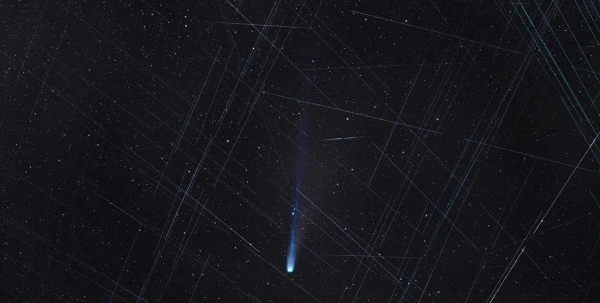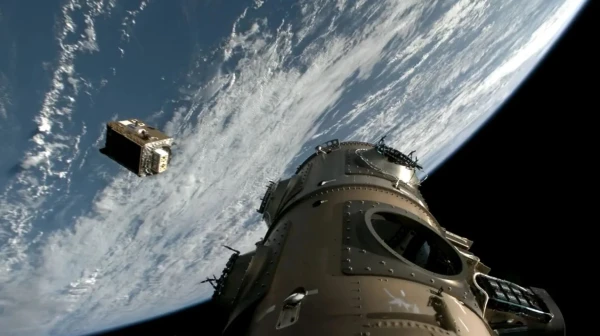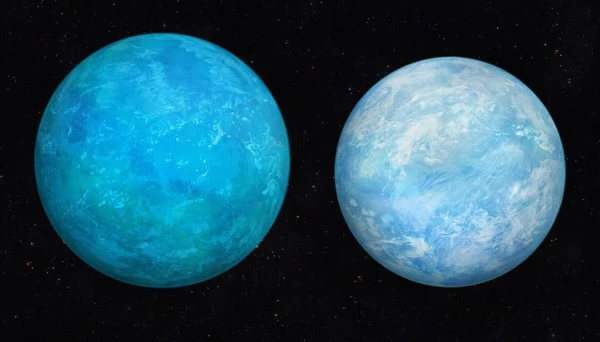
Thousands of Starlink satellites create glowing streaks in the night sky that interfere with capturing impressive photographs of celestial objects, writes Focus.
In recent months, space enthusiasts have been photographing one of the brightest comets of this year — C/2025 A6 (Lemmon). It was discovered only in September, and at the end of October, this comet approached Earth for the first time in 1,350 years. However, the images of the comet were often spoiled by the trails of thousands of satellites in orbit. An astrophotographer says that it is now practically impossible to take a photograph of a celestial object without the trails of satellites being visible, writes Space.
While the overwhelming majority of astrophotographers preferred to publish edited images of the comet C/2025 A6 (Lemmon), others intentionally showed the incredible number of satellites visible in the photos.
In many photographs, the comet C/2025 A6 (Lemmon) is depicted surrounded by a network of thin, web-like lines, each representing the trajectory of a satellite in orbit.
Astrophotographer Dan Bartlett says that it is now nearly impossible to obtain a "clean" image of celestial objects without the presence of satellite trails. Before processing the images, each frame contains at least one, and usually several, glowing streaks of satellites.
Currently, there are about 13,000 active satellites in orbit around Earth. Of these, approximately 8,900 are Starlink satellites from Elon Musk's SpaceX. This number will continue to grow, as SpaceX alone plans to launch up to 42,000 of its internet satellites into orbit. Other companies are also planning to fill the orbit with thousands of similar satellites.
Bartlett says that modern computer programs can remove the trails of satellites from images of celestial objects. This also applies to photographs of the comet C/2025 A6 (Lemmon).
"I certainly don’t like seeing so many satellites everywhere I point my telescope or even a good pair of binoculars, but we still haven’t reached the point where we can’t enjoy the night sky," says Bartlett.















Leave a comment